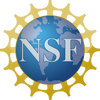Our Approach
Firia Labs Unique Educational Approach

Our educational program creates real-world learning experiences for students. This is achieved through the use of:
- Open-ended physical hardware, used to implement meaningful projects
- Open-ended software, integrating development tools with instructional content
- Python, the fastest growing major programming language used in Industry
The term open-ended refers to the ability for students to directly apply the tools well beyond the scope of what is covered in the curriculum. The program comprises a project-based curriculum grounded in the maker mindset: creating new physical devices and tinkering with existing ones. This gives students a context for learning to code, and dramatically increases engagement over traditional computer science instructional methods which focus on solving math problems or manipulating on-screen elements.
Central to the approach is the exclusive use of text-based programming, rather than drag-and-drop icons. Students are guided step-by-step in the process of learning the python language, with the support of web-based software tools that help catch errors and debug programs. This allows a natural process of learning through making mistakes and iteratively fixing them. The approach appeals to students seeking relevance, meaning, and real-world value from instruction.
Key Education Outcomes:
- Students will be confident in their ability to produce useful software programs using a professional programming language.
- Students will be comfortable with maker hardware, and understand how to combine hardware and software to solve real-world problems.
- Students will gain experience with software debugging tools and techniques used in industry, with direct career readiness impact.
- Students will understand how computers are used in embedded Internet of Things (IoT) devices, not just desktop and mobile platforms.
- Students will be familiar with text-based programming languages foundational to the web and mobile technologies they use every day.
- Students will understand fundamentals of computer science that allow them to acquire and apply new knowledge and skills (e.g. emerging technologies and programming languages) even if they do not retain all program content.
Supporting Research
Ewing, Bridging the Gap Between Blocks and Text-Based Coding, National Science Foundation (SBIR-1721335)
The research addresses a pressing need in the K-12 setting to engage both teachers and students in Coding as a Literacy. Current approaches to teaching computer science and programming principles in K-12 often fail to bridge the gap between block-based graphical representations and text-based programming languages.
Sentance et al., “Creating cool stuff” – Pupils’ experience of the BBC micro:bit, Kings College London
https://kclpure.kcl.ac.uk/portal/files/65615345/creating_cool_stuff_POSTPRINT_to_share.pdf
Investigation and assessment of BBC micro:bit used in K-12 setting.
Excerpt:
From the student’s perspective, physical computing can be much more positive than a more traditional screen-based experience because of the focus on ideas, rather than restrictions; students appreciate building real, tangible devices and report that physical computing platforms stimulate their creativity. This in turn engenders a broader and deeper engagement in CS learning activities. Also, anecdotally girls are more engaged when exposed to physical computing, often enjoying coding an embedded device application as a means to an end. Crucially, girls have consistently described growing in confidence as a result of their exposure to physical computing.
Discovery Research – Survey Statistics on 1st year of micro:bit in the UK: http://www.bbc.co.uk/mediacentre/latestnews/2017/microbit-first-year
ACM, et. al., K–12 Computer Science Framework. (2016), http://www.k12cs.org
Applicable Standards
The program draws from a number of standards, including CSTA, ISTE, K-12 CS Framework, AP CS A, AP CS Principles, NGSS, and the UK National Curriculum (computing programmes of study) to inform a well-rounded and pedagogically sound instructional approach.

Credits: Thanks to the National Science Foundation for sponsoring the research and development of our innovative technology for teaching coding.



